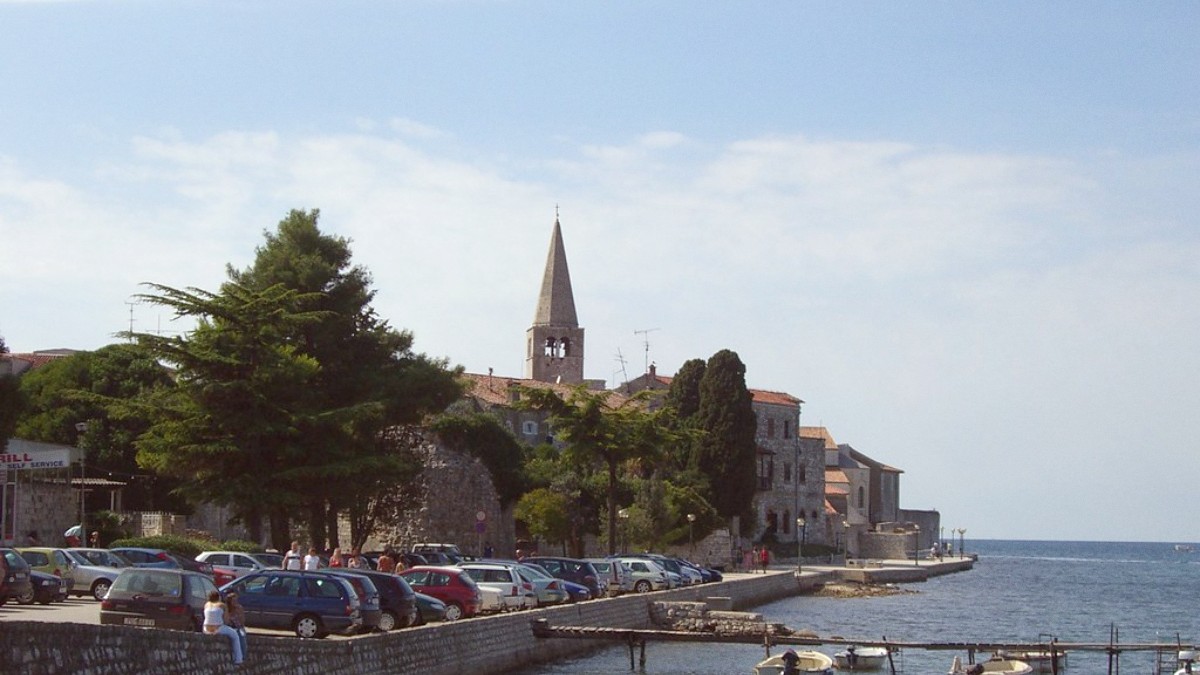
Istria, Croatia
Istria's culinary traditions stem from centuries of diverse rulers and cultural exchange. Venetian rule brought Italian techniques, while Central European influences from the Austro-Hungarian Empire added heartier dishes.
Olive oil is a central place in Istrian cooking, often called "liquid gold" for its quality. It forms the foundation of many dishes.
Lunch typically happens from 1 PM to 3 PM. Dinner, the main social meal, usually starts from 7 PM and extends late into the evening during peak season.
Tipping is not mandatory but is appreciated for good service. See Section 2.3 for detailed expectations.
Tap water in Poreč is safe to drink, but restaurants often serve bottled water unless "voda iz pipe" (tap water) is requested. Bread often accompanies meals and might appear as a separate charge on the bill.
An iconic Istrian dish: handmade quill-shaped pasta with generous fresh truffle shavings (white or black).
Distinct earthy aroma and memorable taste.
Air-dried ham, similar to Italian prosciutto, thinly sliced and cured with local herbs.
A savory, tender appetizer.
A flavorful fish stew typically made with various local fish and served with polenta.
Highlights the Adriatic's fresh seafood.
Savory pastry (meat, cheese, or spinach) from bakeries for a quick meal. Pizza slices are widely available due to Italian influence.
Grilled minced meat dishes served in flatbread (Lepinja) with onions and Ajvar.
For special evenings, upscale restaurants in Poreč and nearby towns serve refined modern Istrian cuisine.
Numerous Konobas (traditional taverns) and trattorias serve local specialties at reasonable prices.
Affordable meal choices include local bakeries (Pekara), pizza stands, and fast-food grills.
Pizzerias are found on almost every corner due to the strong Italian influence.
A quick and familiar meal option.
Some restaurants also serve general Mediterranean or broader European cuisine beyond local dishes.
Good for variety or different preferences.
Making reservations for larger groups is advisable, especially during peak season.
Most establishments accept credit cards, but having some cash is good for smaller places.
Restaurants fill up around 8 PM-9 PM for dinner; early or late dining can avoid waits.
Local residents can recommend hidden gems or daily specials.
Awareness of gluten-free (Bez glutena) and other common allergens is growing.
Clear communication of your needs is advisable.
For severe allergies, carrying a Translation card explaining specific restrictions can be very helpful.
This ensures accurate communication with kitchen staff.
To assist with ordering, remember these phrases:
Online forums and apps can help locate suitable restaurants for specific diets.
Visit local producers in the Istrian hinterland for guided tastings.
Many wineries offer cellar tours and guided tastings in the region.
Join a guided truffle hunt with trained dogs, especially in autumn or winter.
Some restaurants offer unique menus focusing on seasonal items like wild game or mushrooms.
Look for wine-paired dinners for a complete experience.
Consider a dinner cruise for a distinct dining ambiance on the water.
A memorable way to enjoy the coastal views and local cuisine.
Direct connection to fresh seafood, truffles, and seasonal produce.
Learning about traditional Istrian cooking and farming methods.
Attending local food and wine festivals based on seasonal harvests.
When exploring Istrian cuisine, remember that the region's climate and history significantly shaped its dishes. Embracing the local olive oil and wine is a must.